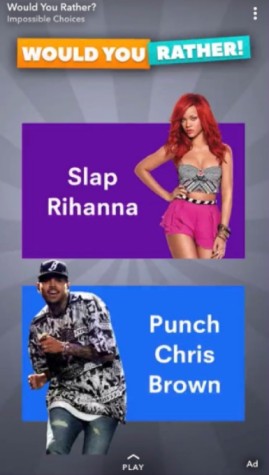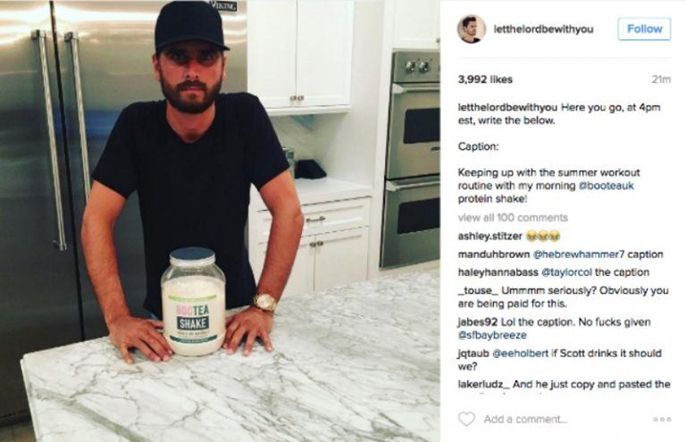Advertising is a fine and fickle art – at every stage you run the risk of overselling and annoying your audience, or not doing enough and falling off the radar entirely.
Even if an advertiser excels at developing and delivering marketing messages, and has succeeded in the past, a sudden change (such as the outbreak of a viral pandemic) can completely destroy an advertising campaign before anyone responsible for it knows what’s going on.
We’re going to take a look at a few our most-favourite advertising blunders of recent years

Worried about coronavirus? Then why not try ordering yourself an anti-viral, medical-grade face mask? What could possibly go wrong?
If it wasn’t obvious, the problem is that the ad states that the masks are manufactured and shipped from their factory in Whuan, China – the epicentre of coronavirus. Naturally, anyone with knowledge about the coronavirus – and where it originated – is going to flee from the first sign of ‘shipping from Wuhan, China’.
Even if any fear over using this mask is irrational, or born out media sensationalism, the average consumer isn’t going to take the risk.
2: Would you rather be incentive, or tone-deaf?
Looking back, this 2019 blunder by Snapchat is pretty hilarious, but it definitely wasn’t seen as hilarious by the users who discovered it back in March.

The ad is to promote a new 3rd party game on their platform called ‘would you rather’. The only problem is that the example choice they give users in the ad is completely tone-deaf and could be argued make light of domestic violence.
This is because the Hollywood relationship between performers Chris Brown and Rihanna notoriously ended in blood when Chris Brown physically assaulted Rihanna. It was frontpage news around the world and is what some say stopped Rihanna from climbing as high in the industry as she wanted to because of her trauma.
Basically, whoever designed this ad either has a sick sense of humour or was completely ignorant of the scandal and perhaps even the past relationship between the performs. Suffice it to say, Snapchat apologised profusely and removed the ad.
3: Shake things up with a lazy influencer

Influencer marketing has become a powerful way to get people to pay attention to products that would normally go unnoticed on store shelves. It has the added benefit of generating loyalty with a brand, because people like to use products endorsed by celebrities, bloggers, YouTubers and whoever else they follow.
One of the biggest markets for influencer marketing is in health and beauty, since the influence can quickly demonstrate that they use the product (makeup, workout supplement etc) in a quick social media post. Unfortunately for the protein shake brand Bootea Shake, their choice of influencer, former Keeping Up with the Kardashians star Scott Disick, seemed he couldn’t really care less how sincere he appeared.
In a dead-faced stare at the camera, standing over the product he is being paid to tacitly promote, Scott is already proving his inflexibility as a spokesperson. However, the real blunder is in the image’s caption, where Scott copy & pasted the marketing caption he received in an email – including the editor’s instructions on when to post it!
Even without the accidental inclusion of the editor’s instructions, the post would have still been a poor example of influencer marketing. Scott’s blunder regarding the caption really only adds insult to injury.
Pop group Little Mix also made a similar blunder with this Instagram post below promoting their new perfume. It also serves to show how informal grammar and emojis are all a part of the ad copywriter’s toolbox to make people believe the post appears organic and sincere.

4: Could you be a little more subtle, or maybe less?
In March 2018, popular international beer brand Heineken released a commercial that was met with quick and widespread backlash for what was clearly a racist sentiment, or at least a grossly tone-deaf one. It’s the kind of blunder that makes you wonder if it was done deliberately as a wider publicity stunt, where the ad racism is potentially vague enough that it can be excused as a ‘tone-deaf’ blunder.
In the short ad, a bartender slides a beer past 3 black people to a light-skinned woman, with the caption ‘Sometimes, lighter is better.” The whole ordeal seemed to wrap up pretty quickly with Heineken pulling the ad, but it remains hard to believe that the marketing people at Heineken could review and approve this commercial without predicting a scandal.
https://www.youtube.com/watch?v=3gzcFGG9rTU
Source: BrainFood via YouTube
5: Just stop, please.
Pepsi is responsible for one of the most notorious advertising blunders of recent years, with the fiasco causing their CEO to later resign citing it as the most difficult ordeal of their career. We’re of course talking about the Kendal Jenner – Pepsi partnership that resulted in a commercial that screamed insensitivity.
In the ad, Jenner interrupts what is ostensibly a race-relations protest (this ad took place during the heat of the black lives matter movement) by crossing no-man’s-land to hand a riot police officer a can of Pepsi cola and bridge the gap. Naturally, the commercial was lambasted and parodied to death for how blatantly ignorant it seemed, the fact that it was championed by a teenage fashion personality, with seemingly no skin in the game, added to the cringe-factor.
The commercial is a good example of why trying to tie your brand to a deeply divisive social issue is almost always going to backfire – at best people wish you never said anything, at worst people accuse you of exploiting emotionally sensitive issues for the sake of publicity, betraying the sentiment the ad attempts to achieve.
It’s also an even better example of how an in-house ad department can lose objectivity about their own brand and presume they have the social clout to do a campaign like this. Many ad agencies have used this blunder by Pepsi to demonstrate why an 3rd party agency would never have gone that route and would have save Pepsi a whole bunch of trouble.
Source: Yash Yadav via YouTube
Got any bigger advertising blunders to suggest? Leave a comment below!
